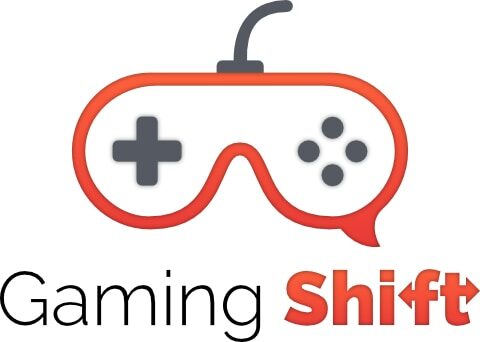Before the PlayStation 1, consoles used cartridges which had the advantages of quicker loading times and built-in save storage. But in the 1990s, you could just store way more data on a CD which is why the PS1 could play some absolutely massive games. Still, PS1 games like Final Fantasy VII and Resident Evil 2 came with two or more discs.
Some developers always need more storage, and this is why PS1 games have multiple discs. Usually, JRPGs split their world into multiple zones that are each contained in one disc. A game with high-res textures and lots of full-motion cinematics can also cross the 660MB limit of a PS1 game disc.
If you’re wondering how games with multiple discs work, they contain both unique and replicated data on each disc. Things like environmental assets, character models, audio files, etc. are copied onto each disc. Level-specific dialogue and cutscenes are stored on different discs, so they can load when needed.
This Is Why PS1 Games Have Multiple Discs
Before the PlayStation 1, game consoles used cartridges as their primary storage medium. Each cartridge contained one or more ROM chips for game files, along with some kind of EEPROM to store user progress data. Some cartridges even included specialized hardware to process graphical and sound effects.
When Compact Discs arrived on the scene, they revolutionized how games were designed and played. While a cartridge could barely store a couple of megabytes, CDs could go as high as 650MB. Printing a game to a CD was a lot cheaper than printing it to a cartridge.
As a result, publishers could pass on the cost savings to customers. Games became bigger and more complex, as developers were no longer restrained by storage space. However, they also became cheaper (standardized at $60 by the Xbox 360/ PS3 era).
Yet, early PS1 games were not always designed to fit into one disc. Especially, the JRPGs like Chrono Trigger, Final Fantasy, and Grandia. Developers created massive worlds, with complicated interlinking storylines that contained dozens of unique missions for each character in your party.
And fitting the entire world into a CD was tough. Even with the low-quality models and textures of that time. So developers would separate the game into sections, based on the story and world.
Each biome or “zone” had its own disc. And common assets like character models, textures, items, etc. would be shared across all discs. Unique content consisted of levels, dialogue, cutscenes, and soundtracks.
The game would ask you to load the appropriate disc when you advanced into a new zone. Some games use the multi-disc approach in a different way. For instance, Resident Evil 2 has Leon’s campaign on disc 1 and Claire’s campaign on disc 2.
What PS1 Game Has The Most Discs?
That would be Riven, a puzzle adventure game that is played from a first-person perspective. It features a point-and-click interface, much like its predecessor Myst. Riven was released on PS1 in 1997 with a whopping 5 discs, although the 1998 re-release used just one DVD.
How Do Multi-Disc PS1 Games Work On Emulators?
Emulators run PS1 games from a ROM file that contains all discs in one ISO. Within the emulator, there is an option that lets you swap out one virtual disc for another when the game prompts you to do so. With certain games that work on the Beetle core in RetroArch, you might have to combine the cue files into a single m3u file.
Cartridges vs Discs In The Modern Era
Cartridges as they existed in the 1980s and 1990s are not around anymore. Today, the nearest equivalent of a “cartridge” would be Nintendo’s game cards used in the Switch. These use proprietary ROM technology developed in collaboration with Macronix, a Taiwanese integrated storage media manufacturer.
Modern SD cards can also be considered cartridges, as they are a single block of storage with no moving parts that you insert into your game console. A Blu-Ray disc tops out at 50GB (dual-layer), while the Switch cartridge can hold up to 32GB of data. There is reportedly a 64GB version of the Switch cartridge, but it’s hard to confirm which games use this.
Did Any PS2 Games Have Multiple Discs?
While the PS1 had over 50 multi-disc games in North America alone, the PS2 received far fewer multi-disc games. Because DVDs could hold a lot more data, 4.7GB vs the 700MB limit you get with a CD. Plus, dual-layer DVDs can hold up to 8.5GB of data.
Only 11 games on the PS2 contained more than one disc. Some of the notable ones are Armored Core, Devil May Cry 2, Grandia III, and Metal Gear Solid 3: Subsistence. Just like the PS1, you had to swap out discs in the tray while entering a new zone or level.
Can PS1 Read Burned Discs?
The PS1 has security measures built into its disc drive that checks whether you’re running a legitimate copy of the game. However, you can play burned CDs on a modded PS1. Note that it doesn’t read DVDs, but only CDs.
If you burn your game to a CD and run it on a PS1 that has a mod chip installed, it will play just like any regular game. However, you’ll need to burn your CD at a speed that the PS1 can read (4x max).
Conclusion
I hope this article gave you an idea of why PS1 games often come on multiple discs. Even though it was the 1990s and games were tiny compared to today, 660MB wasn’t a lot of space. There is a reason video game developers stepped away from CDs in the early 2000s.
Large RPGs and open-world sandbox games can’t fit on one disc. Survival and horror games on PS1 also contained more than one disc. Examples are- Resident Evil 2, Parasite Eve, Alone in the Dark, etc.
